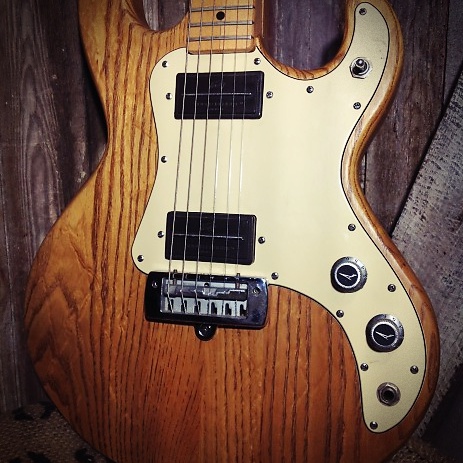
Some players seem to have a natural dislike for Peavey amps, which is often unfair. But what about… the Peavey T-15 guitar??? Now here’s an obscure little gem! In this guest article, Rob Roberge reminds us why this guitar and Peavey itself deserve a bit more love…
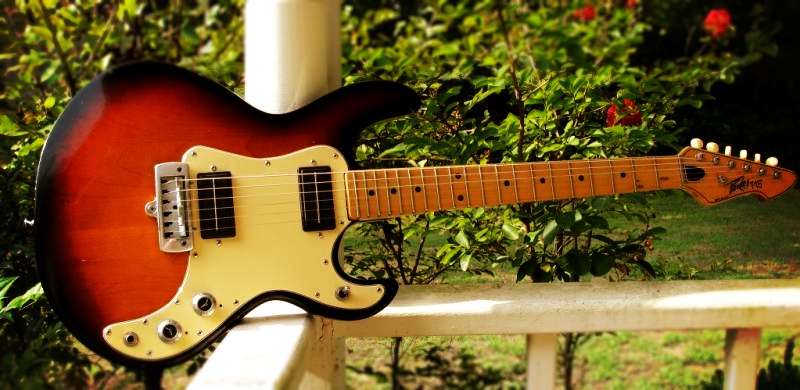
Peavey T-15 guitar – sunburst
I was talking to my buddy – a professional blues player – a great player who has an impeccable ear for tone, telling him about my new (well, used…but new to me) really outstanding amp, a Peavey Delta Blues. He said to me, “you lost me when you used Peavey and Blues in the same sentence.” And while I could have gone on about some of the southern blues players that, in fact, did and still do use Peaveys (both guitars and amps), I kept my mouth shut. I could have even gone into a minor history lesson about Lynyrd Skynyrd using the very powerful and tuneful competition for the 70’s Fender Twin Reverbs – the Peavey Mace (with SIX 6L6 power tubes inspiring all those Zippos to flame up every night during “Free Bird”).
But if you think many guitar players’ reaction to Peavey amps is dismissive, just try selling them on the brilliant (Yes. Brilliant. There. I said it.) T-Series of Peavey guitars (many made from the late 70’s-mid 80’s, though most dying a quiet death in the early 80’s). At best, you may get a chuckle that suggests you know nothing. Or a comment about how ugly they are (not an uncommon thought…and actually, with some models, perhaps the most valid criticism of the series). Or even an incredulous reaction: “Are you kidding? Peavey? Peavey guitars? Please.”
But why this reaction to Peavey guitar equipment? Especially the guitars themselves. So long as we’re not talking about an abomination like the pink Adrian Vandenberg signature model of the late 80’s…ouch. Yes…Peavey deserved all mocking and humiliation for that clunker.
One of my main theories for why Peavey is taken most seriously for their PA’s and audio equipment, and at times very seriously for their amps, and almost not seriously at all for their guitars (especially, paradoxically and oddly, for what is their classic period when they were making as good or better guitars than either Fender or Gibson) is for one unfortunate reason: they had almost no recognition at the time as a guitar builder. And they committed a cardinal sin in the guitar business: they were (and still are, for many players) pretty uncool and, at best, aesthetically boring. No way to get a new line of guitars off the ground.
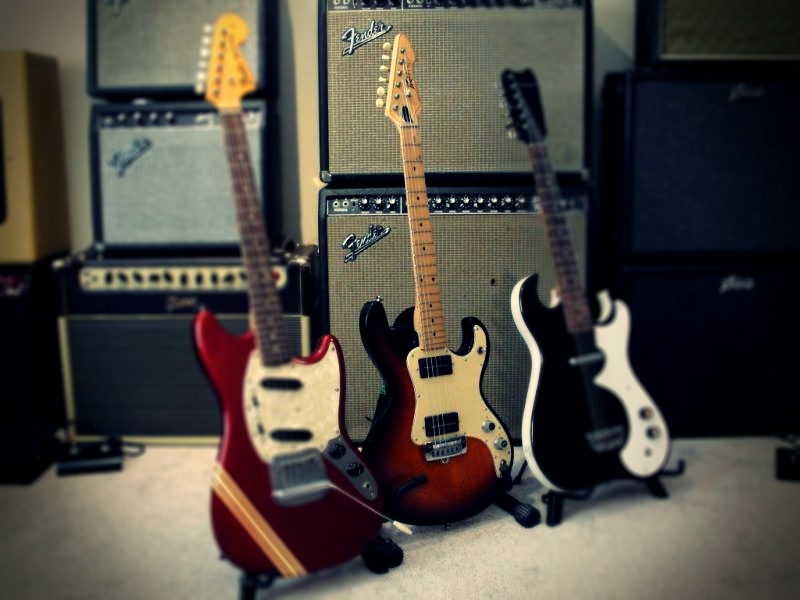
Peavey T-15 and some better-known models
And while we guitar players tend to think we are somewhat radical and hardly conservative, consumers in the guitar market are like consumers in most other markets – they go with brand names they know other people think highly of. And in the late 70’s, that meant—more or less—Fender and Gibson. Even if those companies were producing, it is now widely agreed, some of the worst instruments they have ever made.
Of course, this is an oversimplification—the very existence of Eastwood Guitars points to the fact that there is a market for guitar players who want to stand out from the Strat, Tele, and Les Paul crowd. But, I’d argue, that market was pretty much absent in the late 70’s. It’s only over the last 15-20 years that we have seen a steady growth of interest in some of the most interesting and wild guitars of the 60’s.
The Rare Guitars Revival
The (steadily over the last fifteen/twenty years) increasing interest in Harmonys, Danos, Valcos, some of the best Kays, and others has been caused, I’d argue, by a two-prong desire among guitar players:
- As vintage Fenders and Gibsons—and brands Guild, Gretsch, and Epiphones and others—started to skyrocket in price, players on a limited budget still wanted to get their hands on a piece of guitar history and vintage gear. And,
- Players discovered (or rediscovered, as many baby boomers first instruments were affordable 60’s models) that a lot of these budget/catalog guitars from the garage boom of the mid 60’s just happened to be pretty great guitars.
And they were—and this is not to be minimized—cool. In 1979, just about everyone was playing a guitar by a major company. And many of these were the traditional, yet boring designs that hadn’t changed much from the 1950’s.
Even before players such as Jack White brought his radical, funky red resolglass Airline to the masses, you’d had a quiet, yet growing groundswell of underground 80’s and 90’s bands playing inexpensive guitars that are now classics—but were, at the time—simply affordable, weird guitars that set them apart from mainstream bands. Hey, if your band wasn’t mainstream, why play a mainstream guitar? This was even true of some of the higher profile players/bands, with people like Elvis Costello and Tom Verlaine and Steve Wynn dusting off Jazzmasters—which, by the late 70’s, were considered pawn shop crud. Or, if not crud, hardly a guitar that had been by far Fender’s most expensive guitar in the 1963 catalog. By comparison, Strat was very fairly priced (by comparison…it was still pricey for the day), and Teles and Esquires (not to mention, later, Mustangs) were positively relatively cheap.
But even lower on the food chain were the Airlines, the Silvertones, the Harmonys, the Danos. In the early 80’s, Karl Precoda used a Silvertone-branded Harmony H78 (with a missing middle goldfoil) on the Dream Syndicate’s classic The Days of Wine and Roses, an album that was widely praised at the time for bringing back long and aggressive duel guitar to underground rock—with a band that owed more to, say, Quicksilver Messenger Service and the Velvet Underground than to any South Bay Hardcore. All of this with Precoda’s feedback-laden killer tone out of his Harmony. East Bay Ray, from the Dead Kennedys, was famous for using off-brand guitars, often seen with then forgotten/unknown various Valco/Airline resoglass models over a decade before Jack White hit the national stage. No one was like him in bands of the time.
And then perhaps the band who perhaps most single-handedly showed their audience a plethora of cool 1960’s rare and funky and (at the time) forgotten guitars: Anton Newcome’s hollowbody Vox Cheetah he uses this day…over the years, he’s also used a Silvertone 1454L (the Silvertone model number for the Harmony/Airline H78—one of Eastwood great Airline reissues), Vox 12 strings…while brilliant former lead guitar player Jeff Davies was seen on stage with Hagstroms and Harmonys, and sometime bassist/sometime guitarist Matt Hollywood was often seen with a two pickup Rocket.
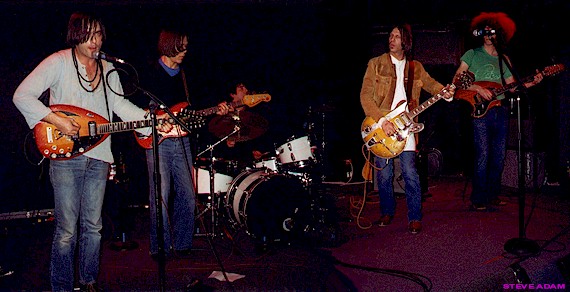
Brian Jonestown Massacre, dusting off vintage guitars…
Peavey T-Series
But, back to the Peaveys of the early 80’s. In some ways, picking a guitar (at least in part…no one plays a piece of crap just because it looks radical and unique) because it looks cool seems like a pretty shallow reason for picking you main/stage guitar. Because it is.
Still, I can understand why players might have shied away from the T-Series at first. The flagship and top of the line, the T-60, is a pretty unattractive guitar. While some people who LOVE them tend to say things on forums like, “it’s so ugly, it’s beautiful.” And while there are some people who do actually think the T-60 is a good looking guitar, they are in the vast minority. And remember, these are on forums for people who absolutely love these guitars. The general guitar playing public, if they are at all familiar with the T-60, tend to think of them as pretty uninspired designs at best, and pretty damn ugly at worst.
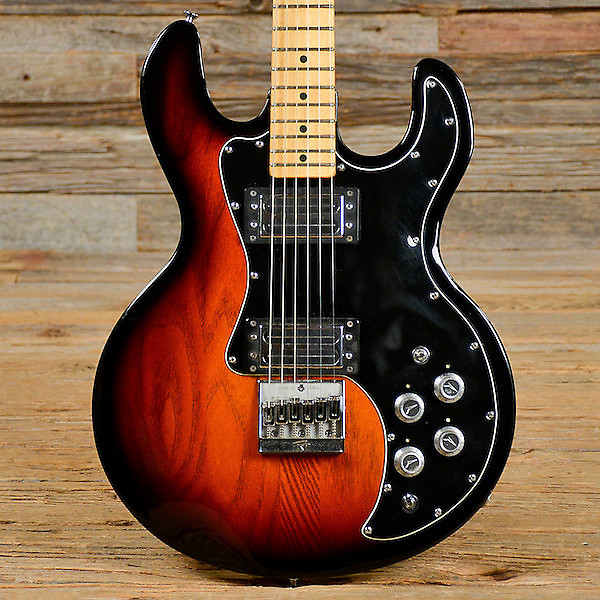
Peavey T-60: ugly, or so-ugly-it’s-beautiful?
But the T-Series was built in a way that revolutionized the guitar making industry. Peavey was the first to construct necks with a computerized copy lathe. By using computers, every neck came out exactly the same for the first time in guitar making history. This is now used throughout the guitar industry. This technology also allowed Peavey to produce guitars that were at least the equal to the quality of Fender and Gibson, yet significantly lower their production costs.
In 1978 (the first year of the T-60’s production), these were the prices of Fender’s Strat, Gibson’s Les Paul, and Peavey’s T-60:
Les Paul: Nearly $1,000
Stratocaster: $790
T-60: $375
And maybe that was another problem for Peavey. Maybe guitarists had the perception that a guitar that sold for so much less couldn’t possibly be the equal of the big names. But that simply wasn’t true (even if they weren’t nearly as good looking).
But the best—or most compelling and surprising—guitar in the T Series may be the T-15. This was a guitar that Peavey marketed as a beginner’s guitar, or a professional guitar for “players with smaller hands.” It’s become known over the years as the “Mississippi Mustang”—a reference, obviously, to Fender’s much more famous short scale classic—the Mustang.
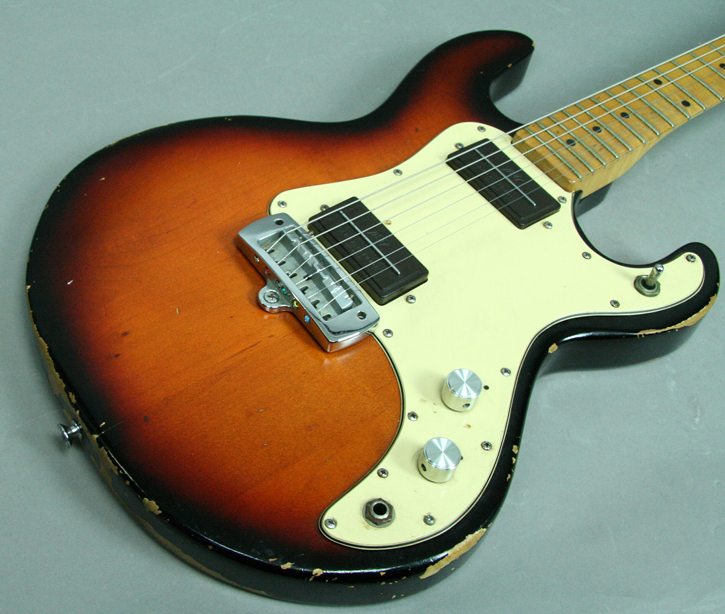
Peavey T-15 in sunburst
The Fender Mustang had/has a 24” scale and a fast, comfortable neck that not only makes single note runs easy to speed up, but also offers a comfortable reach for more complex chords than many longer scale guitars allow and, lastly, makes bending easier up and down the neck.
If you’re a player who enjoys playing the Mustang’s 24” scale, you might well love the T-15’s 23.5” scale. This, combined with a thin, flat, very fast neck, makes for an ease of playing that’s hard to describe. I’ve never player another guitar quite like it. It not only allows all of the benefits I mention above with the Mustang, but it makes double country bends enormously easy once you get used to the effortlessness of the bends. It may be why the guitar found early popularity with country players—with its ability to lend itself to complex country pedal steel-like bends. I have fallen in love with the 23.5” scale—which happens to be very rare and the same scale as the Gibson Byrdland (a short scale that’s also a favorite of Ted Nugent, which I pray is the only thing he and I have in common with the exception that we are both carbon based life forms).
Though, while the whole T Series of Peaveys first found the majority of their players in the country field, the T-15 is becoming more and more popular in indie rock. Some of the big reasons for this could be the one of a kind Peavey Super Ferrite pickups, which sound like a powerful cross between P90’s and some of the twang of a bridge Tele. But they have a sound all their own. Peavey also has the nice feature of there being no treble loss when you roll off the volume knob—the guitar keeps its tone no matter how low you roll off the volume.
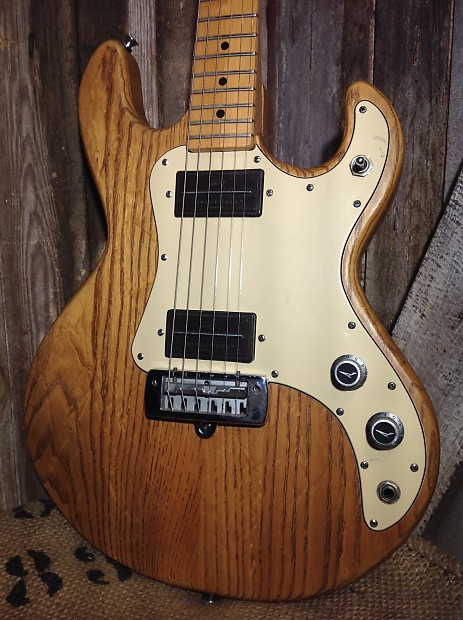
Peavey T-15 in natural
Other features of the guitar are a three way pickup switch and a single tone and volume knob that controls both pickups. There’s a metal nut much like some of the classic Danelectros, which is nice because they never seem to wear down like many of the plastic ones that need to be replaced after many years of work. And while some of the higher end models, like the T-60, are famous for their excessive weight (some are reported to weigh more than a Les Paul—though the colored and sunburst ones supposedly weigh less than the more common natural wood finish), the T-15 is a very light and comfortable instrument. It, too, came most often in a natural wood finish, with much more rare versions made in both sunburst and walnut. According to Peavey’s literature at the time, the T-15’s body is made of “southern hardwood” whatever that might exactly be. The radius is 12”. And the neck is made of hard rock maple. It all adds up to a first-rate guitar. A Mississippi Mustang, indeed.
Lastly, while most of the T-15’s came with Peavey’s custom fit plastic cases, some (hardly all, but some) came with a 10 watt solid state amplifier in/with the case—harkening back to the classic Silvertone (made by Dano) Amp-in-Case of the 60’s. The better one, of course, being the one that came with the two pickup 1457. Complete with a deep tremolo and a great tube sound driven by a single 6V6. While the T-15’s Peavey solid state amplifier hardly comes close to the greatness of the Silvertone Amp-in-Case, it does have some beautiful cleans and serviceable overdrive. But it’s hardly the same, even if it’s a cool and nostalgic feature.
For now, the T-15’s are still pretty affordable for such a great, professional grade guitar. They play like butter, and they have pickups like you’ve never heard, but will want to her a lot more once you do. Grab one before the price starts going up. The T-60’s have already been discovered. Grab the T-15 while you can.
– guest article by Rob Roberge.

T-15 is my go to, hands down. Have had a U.S. Strat and U.S. Tele and have sold both: the Peavey and a Samick are the electrics in my quiver.
thanks for the article.
Anybody looking to buy a peaveyt15 with case for 250. Great condition. Sunburst
Thanks for the write up here Rob, very nice. I own a Peavy T-15 Sunburst, just like you have pictured and it’s original (non-amped) blow molded case (less the foam that deteriorated and had to be scooped out (gah). It plays well with all original everything. I’d like to know what year it is, because I can’t remember what year I bought it (new) I think it was 82 or 83. Is there serial number decoder available?
Yes Amanda Guy I would like to buy the t-15 for 250 if shipping is included
“Southern hardwood” means the body is made of oak…
Everything in the T series are wonderful. My two T-40 basses have sounds all their own.
As far as the “clunker” Vandenberg, to each their own with ’80s shredders, but most people with a lick of sense won’t pay over a grand for a 30 year old clunker. The necks on Peavey shredders are pure heaven.
Amanda guy …is your guitar still available. If so how can I contact you
Hey Fran, I actually have a really nice T-15 Sunburst for sale, I’d probably let it go for the same price Amanda was offering. If you want pics, email me at loganaddis@gmail.com
Totally NOT cool plagiarizing my blog from 2012!
https://wgsusa.com/peavey-t-15-guitar-aka-%E2%80%9Cmississippi-mustang%E2%80%9D
Great history article! I half-remembered some of the info when I was trying to explain to my wife what made the T-15 special. I just picked up a “new” (almost never been played) T-15 in red for $250!
Appreciate the detailed information on the peave t model guitars I have a 1983 t15 that I put away 15 years ago in its case. bought SG Gibson , a strat. even bought a 6131 Gretsch all fine guitars just today October 8th 2019 I broke out the t15 t out to see what kind of condition it was in . Well Center middle of the pickup was Rusty all the strings were solid Brown I plugged it into my amp and it was still in tune except for a minor tweak of the B string.
I now have realized all this time that I didn’t need all these other guitars because of their name this guitar is amazing and please nobody asked for it is it for sale or not everything is for sale but you would definitely would not pay the price I would have to have to let it go
Vaughn, he used your photo, big deal? I use photos off the internet all the time….
I love my T-15. Took about a day of adjusting to the short, thin neck, but damn, this thing twangs like a GOOD telecaster! Pick near the bridge and its Luther Perkins city. I think if a P90 and a tele bridge pickup had an offspring, it would sound like a Super Ferrite.
Oh one thing, my stock kluson in line tuners didn’t really hold tune too well. So I installed some Kluson in line thumb locking tuners.However, they were a bit too close together so I had to file both sides of each one a bit and they fit great and the screw holes are the same, no drilling.Its a gig-able guitar now. Just thought I let folks know incase they were planning on doing the same.